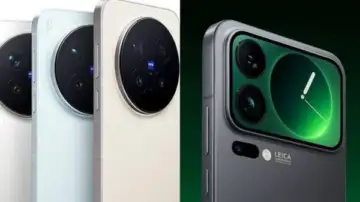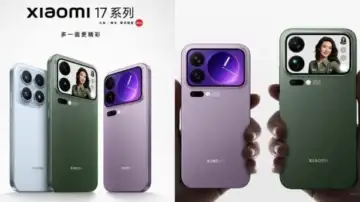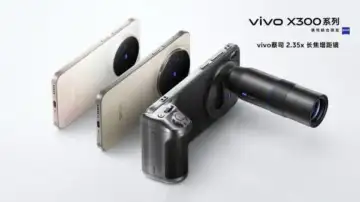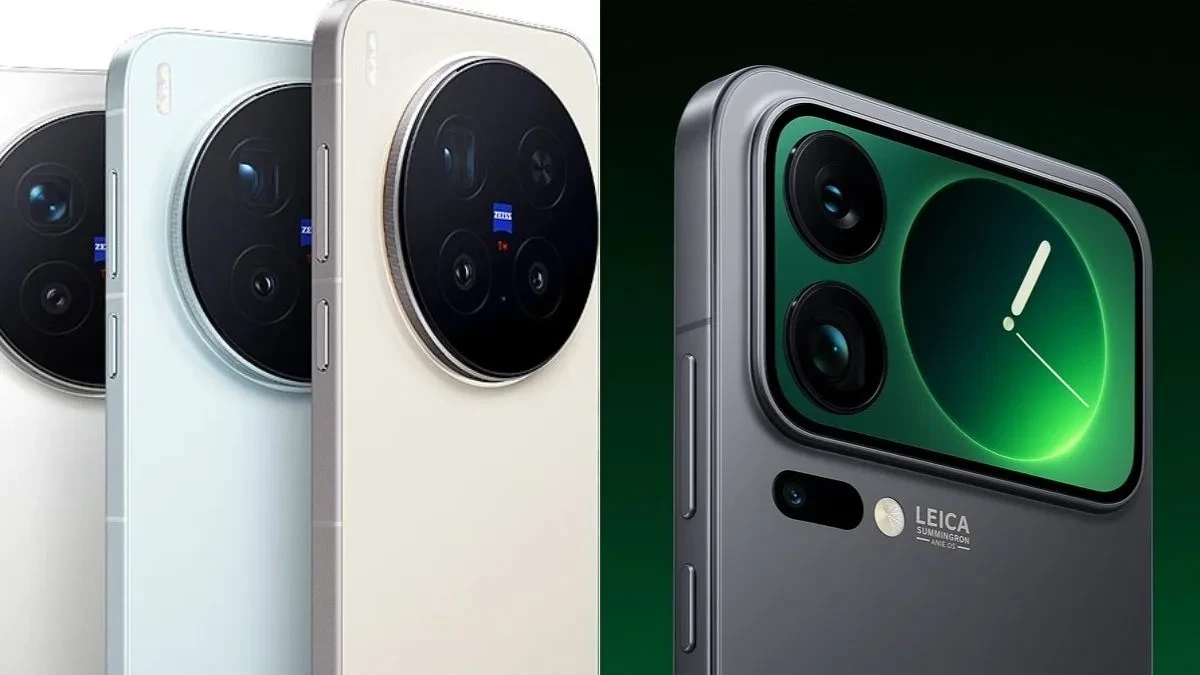Both Vivo and Xiaomi have kicked off the last stretch of 2025 with new flagship phones that go all in on cameras, big screens, and serious power.
The Vivo X300 Pro and Xiaomi 17 Pro Max share a lot on paper, but they approach things very differently. Let’s break it down in simple terms to see what each one brings to the table.

Side-by-Side Specs
| Feature | Vivo X300 Pro | Xiaomi 17 Pro Max |
| Display | 6.78″ LTPO AMOLED, 120Hz, 4500 nits | 6.9″ LTPO AMOLED, 120Hz, 3500 nits + 2.9″ rear AMOLED |
| Processor | Dimensity 9500 (3nm) | Snapdragon 8 Elite Gen 5 (3nm) |
| Main Camera | 50MP (Zeiss) | 50MP (Leica) |
| Telephoto | 200MP, 3.7x zoom | 50MP, 5x zoom |
| Ultrawide | 50MP, 119° | 50MP, 102° |
| Front Camera | 50MP | 50MP (rear display for main-cam selfies) |
| Battery | 6,510mAh, 90W wired / 40W wireless | 7,500mAh, 100W wired / 50W wireless |
| Build | IP68/IP69, 226g | IP68, 219g |
| Software | Android 16, OriginOS 6 | Android 16, HyperOS 3 |
| India Launch | Expected Nov-Dec 2025 | Not confirmed |
Design and Feel
The Vivo X300 Pro keeps things classic. It’s made of glass and aluminum, feels solid in the hand, and weighs around 226 grams. It’s also IP68 and IP69 certified, so it can handle water, dust, and even high-pressure sprays.
The Xiaomi 17 Pro Max is bigger but a bit lighter at 219 grams. It has Xiaomi’s Dragon Crystal Glass 3 on the front and a tough aluminum frame. It’s also IP68 rated, which means it can stay underwater for up to 30 minutes at a depth of 6 meters.
Both skip the headphone jack but come with stereo speakers and Hi-Res audio.
Display
This is where things start getting interesting. The Vivo X300 Pro has a 6.78-inch LTPO AMOLED display with a 120Hz refresh rate, HDR10+, HDR Vivid, Dolby Vision, and an eye-searing peak brightness of 4500 nits. It also uses 2160Hz PWM dimming, which makes it easier on your eyes when you’re using it in low light.
The Xiaomi 17 Pro Max takes it up a notch with a slightly bigger 6.9-inch LTPO AMOLED screen. It supports all the same HDR formats, runs at 120Hz, and peaks at 3500 nits. On its own, that’s impressive but there’s more.

Xiaomi added a second 2.9-inch AMOLED screen on the back. It’s not a gimmick. You can use it to check notifications, control music, or even frame selfies with the main camera setup. It’s the kind of feature that actually makes sense once you start using it, especially if you’re into shooting content or vlogging.
Performance and Software
Both phones use the latest 3nm chips, but from different camps. Vivo went with MediaTek’s Dimensity 9500, while Xiaomi stuck to Qualcomm’s Snapdragon 8 Elite Gen 5. On paper, both should handle anything you throw at them heavy gaming, editing, or multitasking.
The Vivo X300 Pro runs Android 16 with OriginOS 6, which officially launches worldwide on October 15.
The Xiaomi 17 Pro Max uses Android 16 with HyperOS 3, Xiaomi’s custom skin.
Cameras
Both phones are built around cameras, but they go about it differently.
The Vivo X300 Pro has:
- A 50MP main camera with OIS
- A massive 200MP periscope telephoto lens with 3.7x optical zoom and macro support
- A 50MP ultrawide camera

It also carries Zeiss optics, a color spectrum sensor, and even lets you import 3D LUTs for fine-tuning your color grading. Video goes up to 8K at 30fps or 4K at 120fps, and it supports Dolby Vision HDR.
The Xiaomi 17 Pro Max has a similar triple setup, but all at 50MP:
- A wide main camera
- A 5x periscope telephoto
- A 102° ultrawide lens
This one’s tuned by Leica, and it gives you two color options Leica Vibrant and Leica Authentic. Like the Vivo, it records 8K HDR and 4K 120fps video with Dolby Vision support.
Both aim for professional-level results. Vivo focuses more on flexibility and long-range zoom, while Xiaomi leans toward balanced color and Leica’s distinct tone.
Front Camera and Rear Display
Both phones have 50MP front cameras that shoot 4K video, but Xiaomi’s rear display makes things more flexible. You can just use the main camera for selfies and video instead. The smaller screen on the back doubles as a live viewfinder, which is a neat way to get higher-quality front-facing shots.
Battery and Charging
Vivo’s packing a 6,510mAh Silicon-Carbon battery with 90W wired and 40W wireless charging, plus support for reverse charging in both modes.
Xiaomi’s gone bigger with a 7,500mAh Silicon-Carbon battery, 100W wired, and 50W wireless charging, along with 22.5W reverse wireless. Both are fast, but Xiaomi’s setup is the larger of the two.
You’re easily looking at full-day performance from either phone, but Xiaomi’s extra capacity will likely help for gaming or shooting all day.
Connectivity and Extras
You’re getting the best of modern connectivity on both: Wi-Fi 7, Bluetooth 5.4, NFC, infrared, and USB-C 3.2. Vivo also adds optional satellite connectivity, depending on the region, while Xiaomi includes Ultra Wideband (UWB) and DisplayPort output for connecting to external displays.
Fingerprint sensors are ultrasonic and built into the screen on both phones.
Price and Availability
Here’s how things look right now:
- Vivo X300 Pro starts at ¥5,299 (around ₹64,000 / $725). It’s confirmed for a global release, and an India launch between November and December looks likely.
- Xiaomi 17 Pro Max starts at ¥5,999 (around ₹72,000 / $820), but there’s no word yet on an India release. It’s currently only available in China.
Both are available in multiple storage options, going up to 1TB with 16GB RAM.
